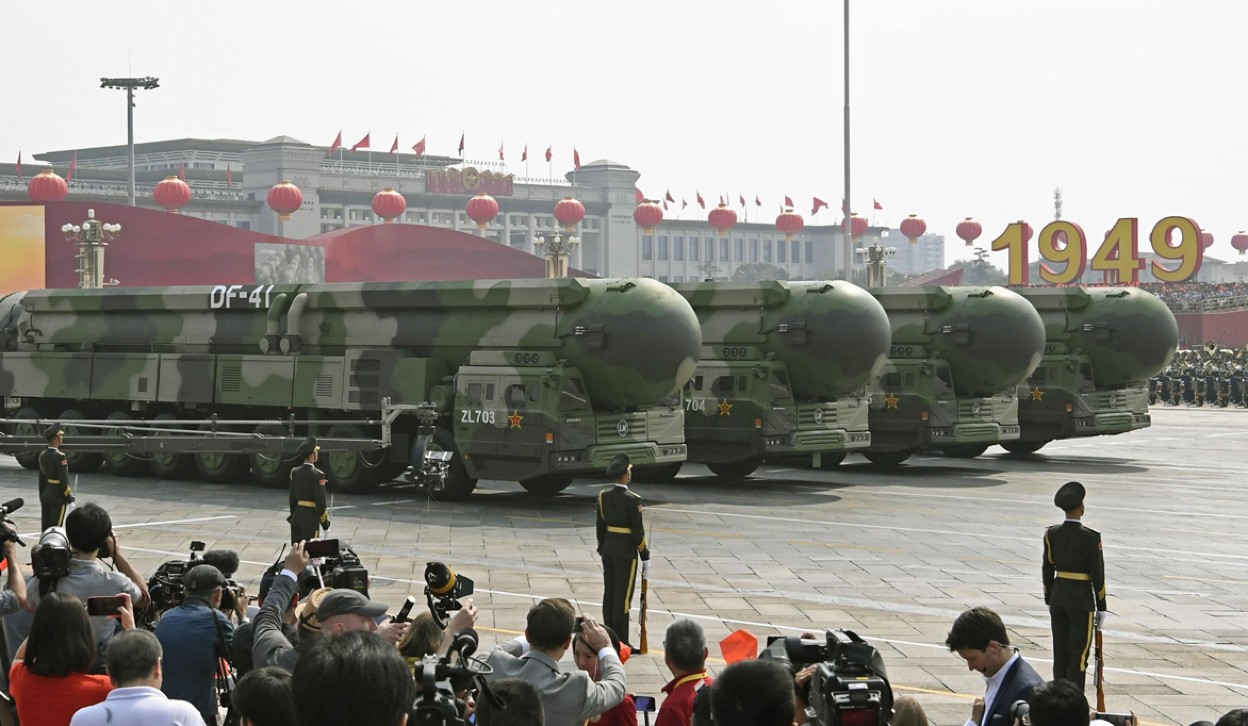As the Tenth Review Conference (RevCon) of the Parties to the Treaty on the Non-Proliferation of Nuclear Weapons (NPT) is finally here, after several postponements due to the COVID-19 pandemic, this is a good time as any to explore and understand the nuclear non-proliferation affairs in Asia, where the dynamics of nuclear deterrence is growing more complicated and intensifying. The nuclear non-proliferation challenges can be seen through various factors, from international conflict tensions all the way to emerging technologies. This article will explore the case of nuclear non-proliferation challenges in Asia along with the crucial key players in the region.
Understanding Nuclear Proliferation in Asia
Since the Second Nuclear Age arrived after the World War II era, nuclear weapons were no longer the problem of a superpowers possession, but also its proliferation among regions around the world. The nuclear weapons itself, as the most powerful weapons the world has ever seen, convey a much deeper and more complicated impact than its explosive capacity.
For the case of Asia, there are currently four states with nuclear warheads; China, North Korea, India, and Pakistan. Each state has its own unique nuclear history. However, it is possible to say that nuclear weapons proliferation in this region is more or less derived from elements of internal conflicts and tension, along with a desire for more diplomatic credibility.
Looking from today’s world perspective, nuclear war in Asia is much more possible than we think. With the increasing global and regional tensions and the enhancing of each state’s capabilities. Nuclear weapons, which are a political tool, are resting on the risk of escalation.
Challenges and Urgency
Due to the nature of nuclear proliferation in Asia; arms control, disarmament and non-proliferation efforts continue to face crucial challenges. Both the Nuclear dilemma and the Security dilemma work harmoniously to ensure that the chances for the mentioned states, and all other states with nuclear weapons, are unlikely to give them up.
The global and regional current affairs and tensions are one of the crucial factors for the continued proliferation and advancement of nuclear weapons; therefore, the risks of escalation to warfare increased. Nonetheless, looking back in the history of this particular weapon of mass destruction we could see that nuclear bomb itself already created an impact since its development stage, before it is physically formed; this means that nuclear weapons are so destructive, they do not need to be exploded to be “used” – the impact already begins just by possession.
Therefore, when reading news headlines saying “Chinese fighter jets cross into Taiwan’s air defence zone in wake of Pelosi visit” showing the enhancing regional conflicts, especially one involving military capability; these tensions are more or less already part of the nuclear weapon proliferation equation.
Furthermore, the challenges regarding emerging technology are becoming an obstacle for the non-proliferation regime and disarmament effort. As they are creating both the more complex deterrence dynamics while also directly impacting the technicality of the regimes.
From China to AUKUS: Important Key Players for the Non-proliferation efforts in Asia
As we are now arrived at the Third Nuclear Age, in which both multipolar politics and multi-domain deterrence play a significant role in nuclear governance. Arms control, disarmament and non-proliferation affairs are irrefutable a global effort. Especially, in this era in which all global, regional and, at a certain level, domestic affairs are intertwined.
China is undeniably one of the most crucial key players regarding nuclear deterrence in the world due to its advancing capability and technology. China’s nuclear politics history and disarmament effort involvement is a complicated task. However, two of the most crucial elements of China’s nuclear policy could be captured through its “No First Use” policy and “Multi-Domain Deterrence” strategy development. From a global perspective, China is more or less the crucial player for the arms control regime.
The United States, and therefore Russia, is also an important player regarding the nuclear non-proliferation regime in Asia. This is mainly due to two important factors. First, U.S. involvement in Asia’s regional and sub-regional conflicts, which could be traced back to the Cold War era. For the relatively recent case; the AUKUS partnership is a great example of how the connection of Asia’s regional and sub-regional conflict to the world has opened the door for superpowers to influence both nuclear proliferation and non-proliferation affairs. With the existence of such a defence pact, the domino of nuclear arms race risks are densely nudged toward escalation.
From the case mentioned above, it is obvious that other states with nuclear weapons, either looking back to history or forward to the future, play crucial roles regarding nuclear proliferation and non-proliferation affairs in Asia.
Challenges for nuclear non-proliferation efforts emerge along multipolarity tensions; they are more complicated and complex on all global levels. For Asia, this is no different, only adding to the complexity of the regional and sub-regional dynamic conflict; making it vulnerable to both external and internal influences on nuclear proliferation and non-proliferation efforts. The way towards nuclear non-proliferation undeniably has to be on the multilateral, a global collective action, level. However, as Asia’s non-proliferation affairs are crucial to the world and itself, it is important that we continue to discuss, speak and participate in the discussion for a future that is safe for humanity – a world without nuclear weapons.

